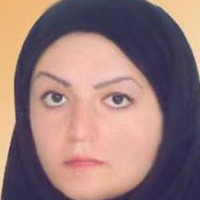Study on the Cultural Relations of the kesht dasht tepe in the Parthian Period Based on the Second Archaeological excavation
Author(s):
Article Type:
Research/Original Article (دارای رتبه معتبر)
Abstract:
Dibaj Tepe is located 53 km to the north of Damghan . The Neyshabur and Damghan plains form part of an East-West route extending from Afghanistan to Shahrud, sometimes known as the “Great Khorasan Road.” Damghan itself is on the northern edge of the desert. Architectural discoveries at Dibaj Tepe After the surveying and gridding operations at this site, thirteen trenches of different dimensions were dug . In what follows, for three of these trenches we will describe the architectural data, then the pottery and, finally, discuss their historical influences. Trench II:A trench was excavated on the top of the hill. Judging from the buried remains, three graves found in the upper layers of this trench belong to the early Islamic era. The graves were placed on one level and in the west-east direction. The lower layers of the site were found to be related to the Parthian era.Parthian pottery of northeastern Iran may indicate influence on it by the pottery styles of neighboring regions in Central Asia. Insofar as there are similarities between the Parthian wares we have discovered and those of adjacent regions, we may be able to discuss the economic transactions and social interactions of different cultural zones. A wide range of objects has been excavated at Dibaj The excavation described here is a contribution to our better understanding of historical developments in northeastern Iran and the connection of that region with adjoining ones. The focus on the Parthian era is significant, since that dynasty ruled over a wide territory for several centuries and presided over one of the most important periods of Iranian history. It is impossible to understand the substantial achievements of their successors, the Sasanians, without looking closely at the Parthian period. While excavations of Parthian sites to date have focused largely on major centers, there is a great deal to be learned by studying thoroughly a smaller site such as Dibaj Tepe.
Keywords:
Language:
Persian
Published:
Iranian Archaeological Research Journal, Volume:9 Issue: 22, 2019
Pages:
143 to 162
magiran.com/p2062843
دانلود و مطالعه متن این مقاله با یکی از روشهای زیر امکان پذیر است:
اشتراک شخصی
با عضویت و پرداخت آنلاین حق اشتراک یکساله به مبلغ 1,390,000ريال میتوانید 70 عنوان مطلب دانلود کنید!
اشتراک سازمانی
به کتابخانه دانشگاه یا محل کار خود پیشنهاد کنید تا اشتراک سازمانی این پایگاه را برای دسترسی نامحدود همه کاربران به متن مطالب تهیه نمایند!
توجه!
- حق عضویت دریافتی صرف حمایت از نشریات عضو و نگهداری، تکمیل و توسعه مگیران میشود.
- پرداخت حق اشتراک و دانلود مقالات اجازه بازنشر آن در سایر رسانههای چاپی و دیجیتال را به کاربر نمیدهد.
In order to view content subscription is required
Personal subscription
Subscribe magiran.com for 70 € euros via PayPal and download 70 articles during a year.
Organization subscription
Please contact us to subscribe your university or library for unlimited access!



